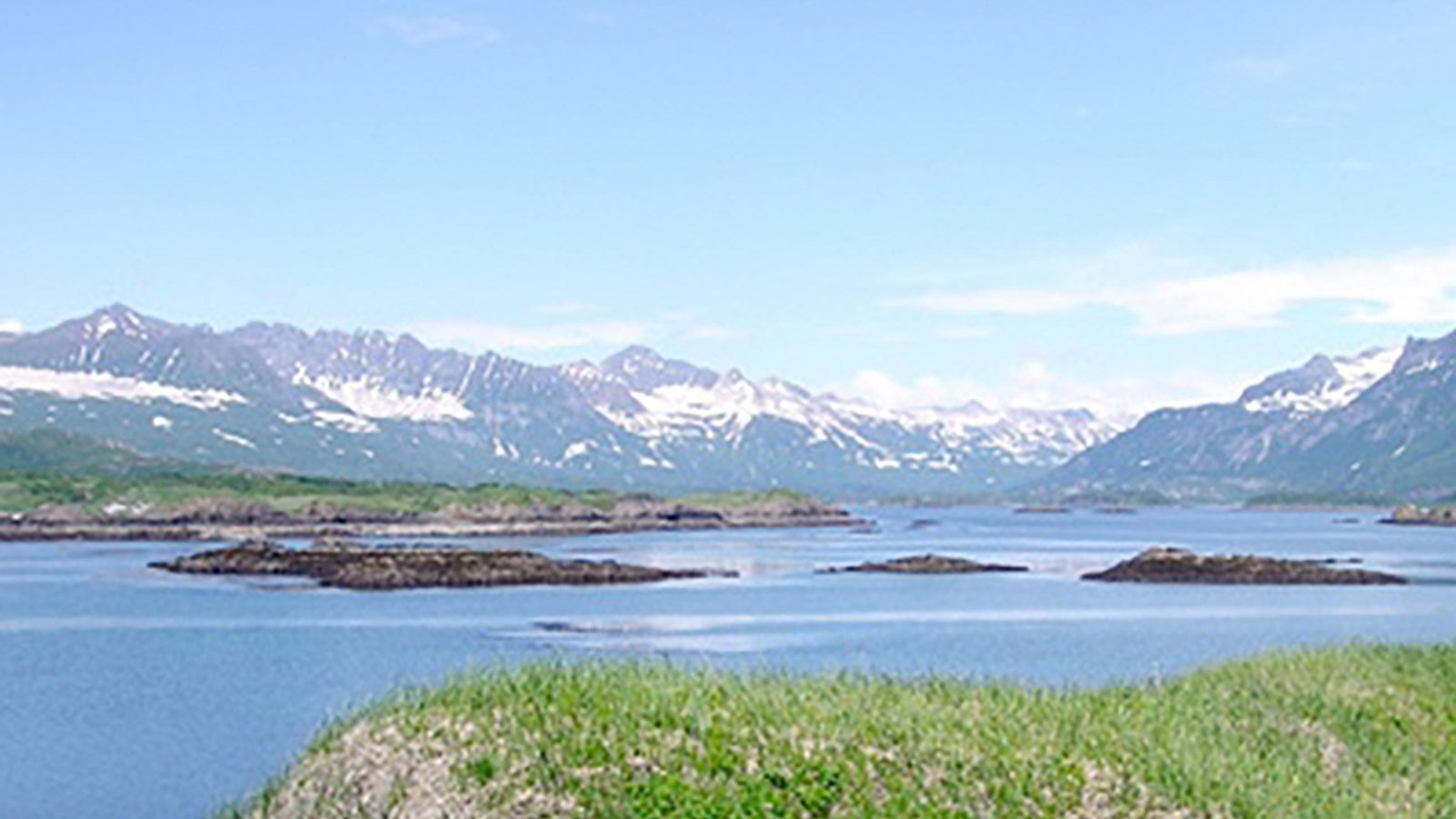Last updated: November 1, 2021
Place
Amalik Bay Archeological District National Historic Landmark

NPS Photo /K. Myers
Scenic View/Photo Spot
The beauty of Amalik is the ability to see a dynamic natural and cultural landscape, more or less as it has been, for hundreds, thousands of years. Most archeological sites are impacted by time and development, but Amalik allows you to see the land as people saw it coming in on their kayaks.The archeological district is a National Historic Landmark and thus afforded the highest degree of protection for historic properties.
Ancient Villages
Over 7,000 years ago, early settlers in the Gulf of Alaska built homes on tiny islands at Amalik Bay in Katmai National Park and Preserve. For thousands of years after, Amalik Bay was home to families dependent upon the natural wealth of the Katmai coast. They left behind a variety of hunting, fishing, and household artifacts. Archeologists have found over two dozen archaeological sites in Amalik Bay.
Where these people came from, how they connected with other groups, and the lifeways of their communities are important parts of Alaska's history.
A Gathering Place
Some of the artifacts found in Amalik Bay are similar to those found in the Aleutian Islands, the Kodiak Islands, and other places around the Gulf of Alaska. This could mean that people in Amalik Bay were related somehow to other groups in the region, trading information and resources with them. The Amalik Bay settlers positioned themselves at a natural gateway between the Kodiak Islands to the east and Bristol Bay on the west.
Amalik Bay served as a gathering place where communities captured fish, migratory birds, sea mammals, and shellfish. The types of animals captured and their ranges in size and age, indicate that people usually lived in Amalik Bay during the spring and summer months.
Enduring Environmental Change
As time went by, the local environment was altered by sea-level changes, volcanic eruptions, and shifting climate. Adapting to changes in the environment required changes in technology and increasing interactions with other groups in the region. This is apparent in the gradual growth in diversity of tool types, a broadening of the variety of animals hunted, and eventually the manufacture of pottery.
Between 2800 and 1800 years ago, there seems to be a gap in human occupation in Amalik Bay. Researchers are uncertain if this is because people were, for social or environmental reasons, compelled to abandon the area. Another possibility is that archaeological remains from this period were demolished by changes in the physical environment of the bay, for instance because of sea-level rise or earthquakes.
Stone Tools and Cultural Phases
There are six archaeological cultural phases found in Amalik Bay. These phases are based on the types of stone tools found in the bay and the radiocarbon dates of the deposits they're found in.
The first phase, found throughout the region, is the Paleoarctic cultural tradition. There's evidence that the Gulf of Alaska was settled sometime around 10,000 years ago but the rarity of these Paleoarctic sites makes it hard to understand what people were doing then. From what's known so far, Paleoarctic settlers in the region were more familiar with inland resources, like caribou. The people that came after were well versed in maritime traditions, such as fishing and hunting sea mammals.
In Amalik Bay, the Pacific Period of the Alder Phase lasted from 6000 - 4500 years ago. The Takli Period-Birch Phase followed from 4500 - 2800 years ago. Then there was the Kukak Period-Cottonwood Phase from 1800 - 1500 years ago. The Kukak Period-Beach Phase (1500 - 1000 years ago), and the Katmai Period-Mound Phase (1000 - 500 years ago) were the last settlements in Amalik Bay.
Additional Information
More National Historic Landmarks in Alaska
Ancient Cod Bones Carry Modern Warning about Mercury and Climate Change, Anchorage Daily News, 2015
The "Mink Island, Amalik Bay" chapter of Archaeology in America: An Encyclopedia, Vol. 4 West Coast and Arctic/Subarctic, published by Greenwood Press in 2009. Written by NPS archaeologist Jeanne M. Schaaf, this chapter provides more details on the artifacts and house features found at the oldest site in the bay.
Archaeology on the Alaska Peninsula: The Northern Section, Fifty Years Onward, published by the University of Oregon in 2011 and written by Don E. Dumond. This volume summarizes the archaeological cultures and history of archaeological research in the Katmai National Park and Preserve area.
The Importance of Birds in Ocean Bay Subsistence: Results from the Mink Island Site, Katmai National Park and Preserve, Alaska. By Molly R. Casperson, Arctic Anthropology Vol.49, No.1 (2012): pp.18-34.
Implications of 'Punctuated Productivity' for Coastal Settlement Patterns: A GIS Study of the Katmai Coast, Gulf of Alaska. By Aron L. Crowell, Mark Matson, and Daniel H. Mann, Alaska Journal of Anthropology Vol. 1, No. 2 (2003): pp. 62-96.
